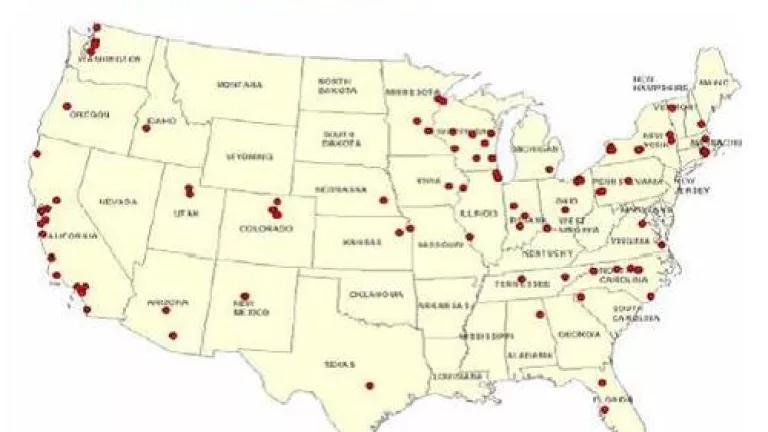
This week I trekked up to Philadelphia to speak to a graduate design class at the University of Pennsylvania about a project of theirs, namely delivering greenhouse-gas-reducing policy recommendations to their client, the Delaware Valley Regional Planning Commission (DVRPC). DVRPC is a relatively capacious MPO with 120 staff charged with developing regional transportation plans and programs. Their recently adopted Connections 2040 plan was informed by expert as well as public input through such tools as a scenario-building tool called “Choices and Voices.”
I toyed with it, maxing out the dials on smart growth and transit and bike/ped investment and achieved just a 10 percent cut in heat-trapping emissions. I kept running into red ink in part b/c the region is 65 percent dependent on a federal transportation program running chronic shortfalls. Governance is also fragmented at DVRPC with 18 voting members representing two states, 9 counties and about 350 municipalities. DVRPC’s job is quite challenging!
Which is why it’s smart to tap expertise at UPenn. And that tees up the main topic of this blog: Town-gown partnerships.
Today U.S. PIRG released a report about such initiatives, fittingly entitled A New Course. As small communities unto themselves and as thought leaders in larger community contexts across the country, colleges and universities can -- and increasingly do -- drive innovation in transportation, due to self-interest as much as altruism. Among the reasons for the growing number of initiatives:
- Reducing the cost of parking, which annually can be as high as $4,000 a space in urban areas;
- Improving community relations, since traffic problems can be a nightmare for local jurisdictions (as in my home town of College Park, MD);
- Catering to prospective students who show an interest in multiple transportation options; and
- Helping the environment as per sustainability commitments by many colleges.
The authors describe 6 specific innovative college programs:
In Boulder, thanks to the 58 miles of paved pathways and 78 underpasses (map pdf of the network here), about 60 percent of all student trips were by bike or on foot in 2012, a 9 percent jump from 1990. This remarkable growth, and the commitment of the university and city generally, aren’t too surprising. Visionary local leadership will get those kinds of results, and Boulder has benefited from top-notch advocates such as former county commissioner Will Toor, whom I met when we were fellow student activists more than 20 years ago. In fact, Will co-authored a book on transportation and sustainability about a decade ago, which the authors of this new study helpfully reference.
In Davis, a University program aimed at boosting carpools provides solid incentives for ridesharing. Specifically, it discounts parking permits, reserves parking spaces, gives a tax break, and provides ride-matching and emergency ride home services to carpoolers. Ridesharing is second only to driving alone as the preferred commuting option for those traveling to campus from outside Davis. Ridesharing has more than doubled among graduate students between the 2007-08 and 2011-12 academic years, climbing to nearly a 7 percent share.
The authors also call for universities to extend their reach to influence the cities and regions that host them. They recommend new town-gown partnerships, new strategies for supporting non-driving modes of transportation and adaptation to the transportation choices favored by younger Americans.
This brings us back to UPenn and DVRPC, which heralds an opportunity to forge planning partnerships too. Yes, implementing cool and popular transportation programs such as the ones profiled is useful. However, universities – specifically those with planning and design schools or departments – can also help improve the big-picture city and regional plans that envision and drive the future of transportation. There’s a lot of intellectual capital on these campuses, and it can be tapped by MPOs to add much-needed analytical and planning capacity on an ongoing basis. This is, of course, a two-way street – universities would benefit not just with better community relations but also course material that has practical and long-lasting effects.
Innovating in the often-stodgy transportation world requires many more partnerships with the nation’s universities, and I applaud PIRG and UPenn for providing such excellent examples.
